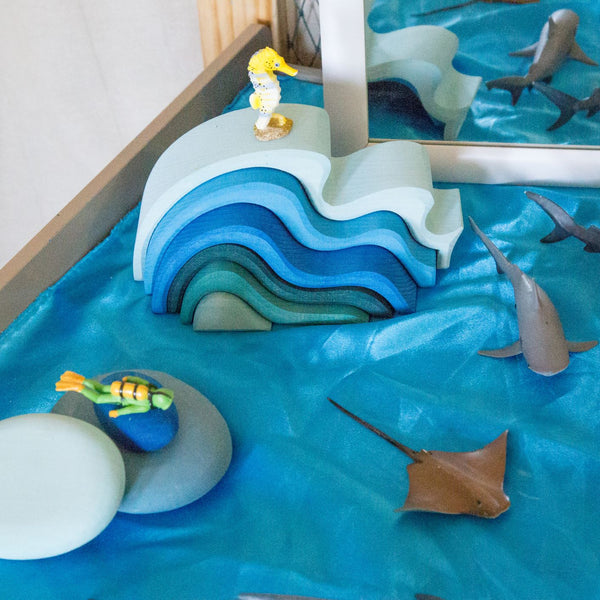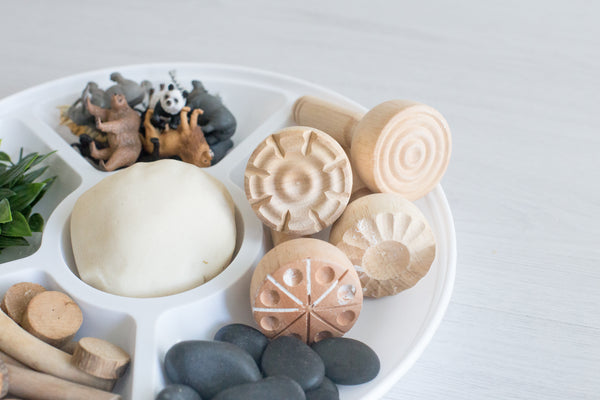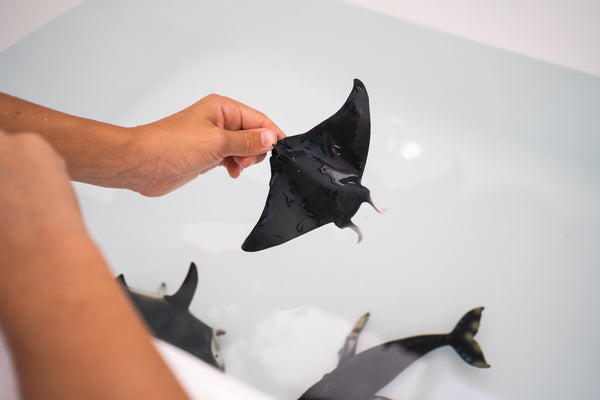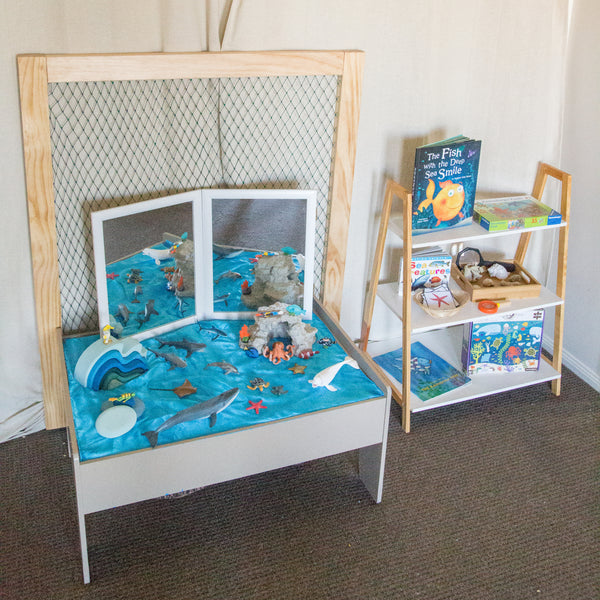We wanted to explore the ideas and benefits around Small World Play for early years learning and how easy it can be to set this type of play activity up in your home or classroom.
Small world play is very much as the phrase suggests, it is play using small toys or miniature figures in a real-life or imaginary setting. By setting up a small world play activity, your child can explore ideas around emotions, life experiences and in doing so it allows them to develop their social, emotional and cognitive skills in familiar, comfortable surroundings.

Theme
When an adult/carer or educator sets up a small world play scene, it is usually based around a theme, so it might be the ocean, farm, city, forest, dinosaurs, fairies or native animals.
The figures would be chosen to cater to the child/ren that the activity is being prepared for. For example in a kindergarten, it might be farm animals and the imaginative play might revolve around relationships and social skills like caring for one another, kindness and what do if someone is sad or angry.
Sensory
Small world play is a great resource for early learning development as it also involves a sensory level as well. Alongside the figures that are being used, you could also add playdough, dry pasta, rice, sand, water, natural elements like leaves or pebbles, fabric (like Sarah's Silks), dirt or sensory cotton sand.
This added layer of sensory play allows a deeper learning experience for the child.

Explore
If you after child-led play, then you would pick the theme of animals and the sensory material and pop them in a large container, bucket or tray and allow the child to use their imagination to then direct their play. They can create stories, explore friendships with the figures and either be in a real-life or fantasy situation.
As an educator or parent, you may want to direct the learning around different real-life situations and themes that you are keen to explore with your child. They might be starting nursery or school and so you want to explore ideas around independence, separation or growing up. This can all be done using small world play in familiar surroundings that your child is comfortable with.
Play
A child's natural mode of learning and expression is play. It allows them to explore their world, express feelings, it stimulates creativity and develops their confidence.
As a result, small world play supports a child's language and problem-solving and gives them techniques they can use in real-life situations.

What do you need to set up Small World Play?
1. Small toys or figures
2. Sensory material
3. Container, tray or even the bath!

Gorgeous images from Little Life Long Learners and The Wonders of Play.

